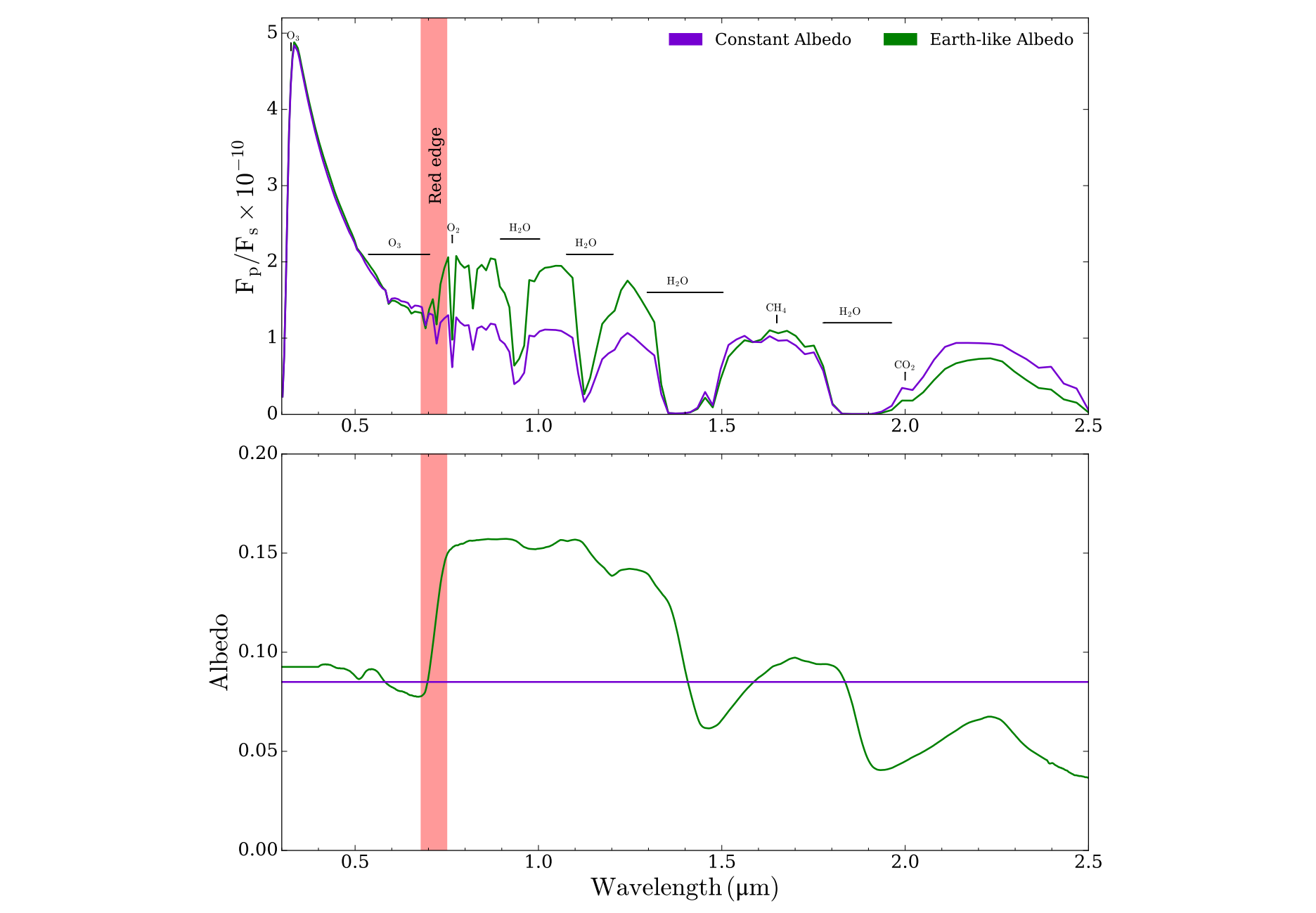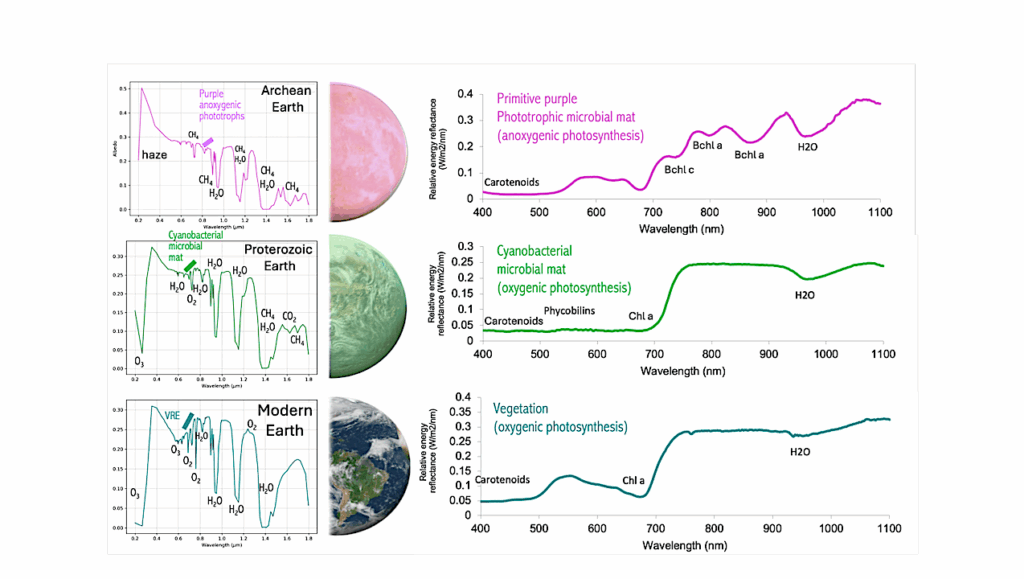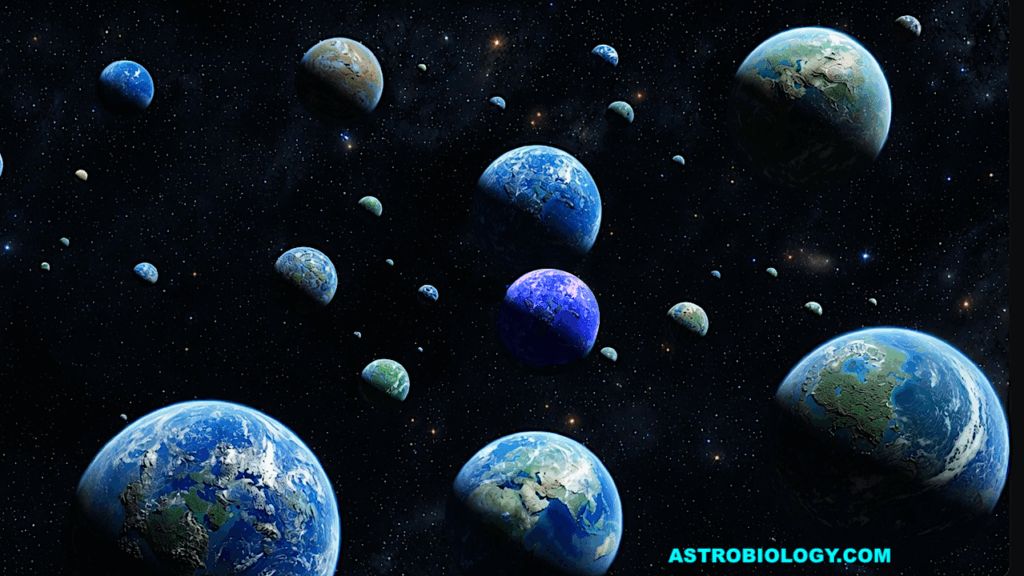In Search of the Edge: A Bayesian Exploration of the Detectability of Red Edges in Exoplanet Reflection Spectra

Reflection spectroscopy holds great promise for characterizing the atmospheres and surfaces of potentially habitable terrestrial exoplanets.
The surface of the modern Earth exhibits a sharp albedo change near 750 nm caused by vegetation – the red edge – which would leave a strong spectral signature if present on an exoplanet.
However, the retrieval of wavelength-dependent surface properties from reflection spectra has seen relatively little study. Here, we propose a new surface albedo parameterization capable of retrieving the wavelength location of a priori unknown ‘edge-like’ features.
We demonstrate that a wavelength-dependent surface albedo model achieves higher accuracy in retrieving atmospheric composition. Wavelength-dependent surfaces are also generally preferred over a uniform albedo model when retrieving simulated reflection spectra for a modern Earth analog, even for moderate signal-to-noise ratios (S/N = 10) and Earth-like clouds.
Further, the location of the modern Earth’s red edge can be robustly and precisely constrained (within 70 nm for S/N = 10). Our results suggest that future space-based direct imaging missions have the potential to infer surface compositions for rocky exoplanets, including spectral edges similar to those caused by life on the modern Earth.
Jonathan Gomez Barrientos, Ryan J. MacDonald, Nikole K. Lewis, Lisa Kaltenegger
Comments: 23 pages, 17 figures. Accepted for publication in ApJ
Subjects: Earth and Planetary Astrophysics (astro-ph.EP); Instrumentation and Methods for Astrophysics (astro-ph.IM)
Cite as: arXiv:2301.01775 [astro-ph.EP] (or arXiv:2301.01775v1 [astro-ph.EP] for this version)
https://doi.org/10.48550/arXiv.2301.01775
Focus to learn more
Submission history
From: Jonathan Gomez Barrientos
[v1] Wed, 4 Jan 2023 19:00:00 UTC (6,329 KB)
https://arxiv.org/abs/2301.01775
Astrobiology








